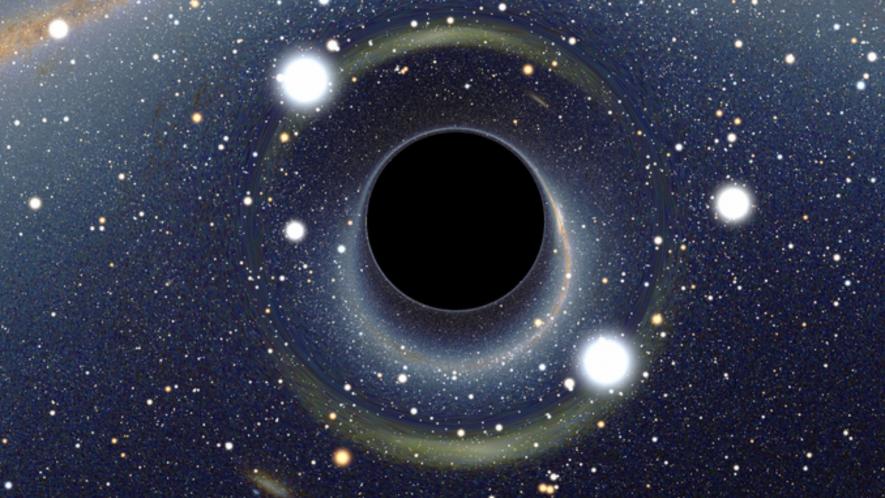XPoSat: What is Inside India’s Quest for Studying Astronomical Objects Like Black Holes

Black Hole, Image Courtesy: wikimedia.org
On the first day of the new year, the Indian Space Research Organisation (ISRO) launched a rocket carrying an observatory that intended to study some of the most complicated astronomical objects like black holes. ISRO launched the XPoSat mission with the PSLV-C58 rocket from the Sriharikota spaceport on January 1 at 9.10 AM local time.
The mission launched with the PSLV-C58 rocket contains the satellite XPOSAT and two other payloads, which are the instruments on board the spacecraft that have specific tasks to perform in space. This is expected to have a lifespan of around five years. Let us understand the parts of the mission and what it intends to do in space.
PSLV-C58: The PSLV-C58 is the 60th PSLV, which stands for Polar Satellite Launch Vehicle. PSLV is designed and operated by ISRO and is a launch vehicle or a rocket in common language, designed initially to ease India’s launching of satellites into space. The PSLV-C58 launched the XPOSAT satellite precisely into the aimed orbit with an altitude of 650 kilometres. This is a low earth orbit (LEO). As per NASA, an LEO is characterised by an orbit having Earth as the centre and an altitude range of 2000 kilometres or less. ISRO says that after PSLV-C58 injects the satellite into the orbit, its PS4 stage (one of the stages of PSLVs) will be ignited twice to reduce the orbit to 350 kilometres.
LEO is generally preferred as it remains near Earth, which makes transportation, communication, observation, and resupply convenient.
The XPOSAT: It stands for X-ray polarimeter satellite, and the observatory (telescope) has been developed by two Indian institutions—the Raman Research Institute and U R Rao Satellite Centre, both are based in Bengaluru and were conceptualised back in 2008.
Notably, XPoSat is the second mission of this kind in the world after NASA launched one in 2021—the IXPE (Imaging X-ray Polarimetry Explorer). The primary objective of the space observatory is to study the polarisation of cosmic X-rays. Describing it, ISRO writes—“XPoSat (X-ray Polarimeter Satellite) is India’s first dedicated polarimetry mission to study various dynamics of bright astronomical X-ray sources in extreme conditions.”
XPoSat will carry out polarisation measurements of X-rays emitted by celestial bodies like black holes, neutron stars, pulsar wind nebulae, etc. It has two payloads, namely the POLIX and XSPECT.
POLIX: It is the X-ray polarimeter (a polarimeter is an instrument to measure the polarisation properties) for astronomical observations. POLIX can measure X-ray polarisation in the energy band of 8-30 keV. This has been developed by Raman Research Institute (RRI) and U R Rao Satellite Center (URSC). This payload is aimed at conducting polarimetry measurements in the medium X-ray energy band.
XSPECT: It is an X-ray spectroscopy. It is expected to provide fast timing and good spectroscopic resolution of astronomical X rays. “Taking advantage of the long duration observations required by POLIX to measure X-ray polarisation, XSPECT can provide long-term monitoring of spectral state changes in continuum emission”—according to ISRO.
Objectives of the Mission:
The emission (of X Rays etc.) from various astronomical sources like black holes are complicated to understand as these originate from complex physical processes. Understanding the nature of such emissions is challenging for astrophysicists, and the polarimetry measurements are expected to decipher such celestial phenomena with more clarity. Polarimetry combined with spectroscopic measurements are thought to provide robust information about the emissions from such astronomical objects.
The Indian mission, expected to add more knowledge, has three primary objectives—first, to measure X-ray polarisation emanating from 50 potential cosmic sources, including black holes and neutron stars, with the help of its POLIX payload; second, to carry out long term spectroscopic studies of the cosmic X-ray sources by its XSPECT payload; and third combine polarisation and spectroscopic measurements of X-ray emissions by POLIX and XSPECT in a common energy band. The POLIX and XSPECT measurements are to be planned in different energy bands.
Get the latest reports & analysis with people's perspective on Protests, movements & deep analytical videos, discussions of the current affairs in your Telegram app. Subscribe to NewsClick's Telegram channel & get Real-Time updates on stories, as they get published on our website.






















